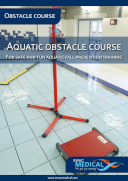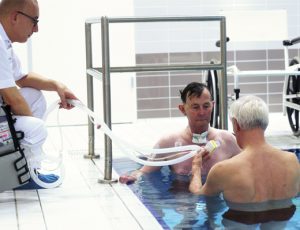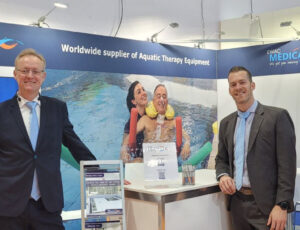Application
An aquatic obstacle course is a specialized piece of equipment that is used in water-based rehabilitation to provide a fun and challenging workout for patients. It is designed to help patients improve their strength, endurance, balance and coordination.
An aquatic obstacle course typically consists of a series of obstacles, such as hurdles, reaching poles, balance beams and wiggle boards that patients must navigate through while in the water. These obstacles can be adjusted in terms of difficulty and distance to match the abilities of each patient.
The buoyancy of the water reduces stress on the joints and spine, making it an ideal option for patients with injuries or mobility issues. The resistance of the water provides a challenging workout that helps to improve cardiovascular fitness, muscle tone and overall fitness.
An aquatic obstacle course can also be used to help patients improve their balance and coordination. The water provides a stable and secure environment for patients to practice navigating through the obstacles, which can help to improve overall balance and stability.
Additionally, an aquatic obstacle course can be used for patients who are recovering from injuries or surgeries, for example, to help improve range of motion, flexibility, and muscle strength. It also can be used for patients with chronic conditions such as arthritis, or in sports training and fitness.
Overall, an aquatic obstacle course is a versatile and effective tool for water-based rehabilitation, helping patients to improve their strength, endurance, balance, and coordination in a fun and challenging way. It provides a workout that can be customized to suit the needs and abilities of each patient.
Our obstacle course
The obstacle course has been developed to train and restore balance, which can be easily done in a pool due to the hydraulic properties of water. All the components have a specific function in fall prevention training.
The obstacle course contains hurdles of variable height, balance beams a balance board and a reaching pole.
Knowledge
Fall prevention training is a hot item in an aging population, where Parkinson is on the increase and many patients need to regain their balance after prolonged periods of bedrest or after surgery. Patients must experience slightly losing their balance while passing an obstacle. The water slows down the process, giving the patient ample time to restore balance. This way, slowly balance can be regained.
Experience
EWAC Medical has been designing and building moveable floors for over 25 years and has successfully finished more than 1.000 projects worldwide. We continually work on improvement and innovation, the obstacle course being an excellent example.
Since 2006, the obstacle course is used in Kliniken Valens in Switzerland on a daily basis. This is just one of the examples of intensive use of these exercise materials.
Follow this link for a document on the exercise possibilities with an EWAC Medical obstacle course
| ENQUIRE NOW |



